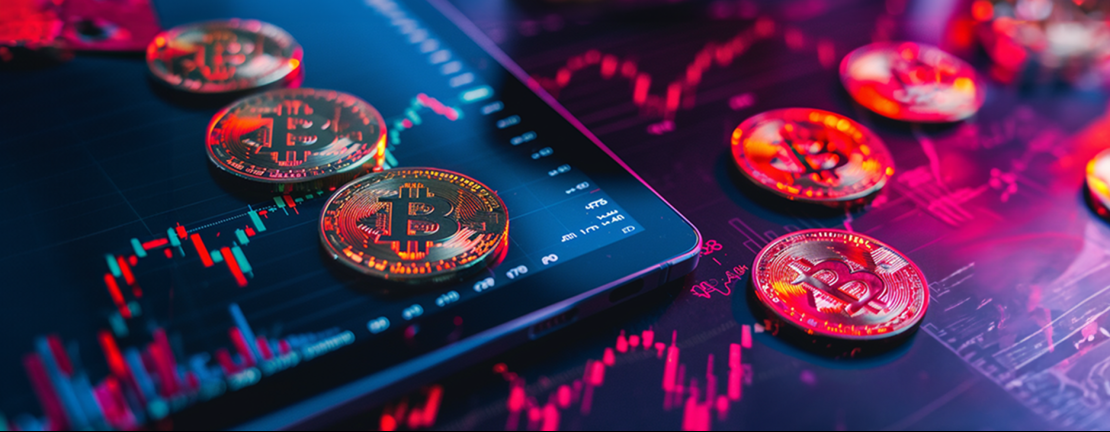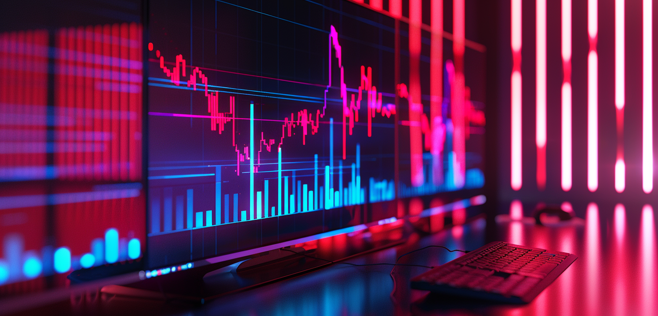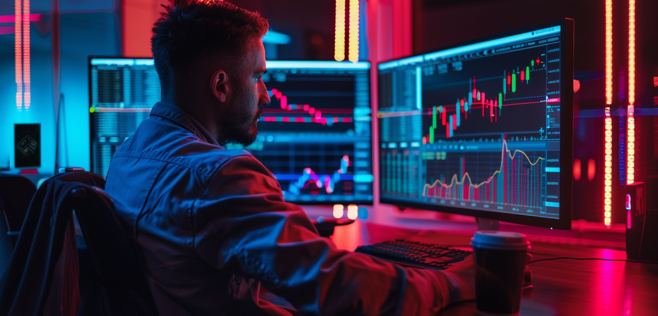Published 26 Apr 2025
Crypto Psychology Exposed: What Your Bitcoin Trading Emotions Really Mean

Cryptocurrency markets experience dramatic price fluctuations, with daily swings exceeding 30%. These wild movements trigger strong emotions that push traders toward irrational decisions. People want objectivity in their investments, but behavioral finance shows that losses hurt twice as much as equivalent gains feel good. This psychological factor shapes how traders interact with cryptocurrency markets.
The psychology of crypto trading provides great advantages to informed investors. A trading strategy using the Fear and Greed Index yielded an impressive 1,145% return on investment, which beat a simple buy-and-hold approach. The crypto psychology cycle reveals clear patterns. Institutional investors tend to build positions when extreme fear grips the market, while retail traders sell in panic. Historical data consistently demonstrates that periods of extreme fear lead to market recoveries, and excessive greed points to potential market tops. Traders can make better decisions in any market condition only when they are willing to recognize these patterns on the crypto market psychology chart.

Understanding the Crypto Psychology Cycle
The crypto psychology cycle shows how investors behave and react during different market phases. Cryptocurrency markets never sleep, and their high volatility makes emotional responses more intense than traditional markets. These psychological patterns keep repeating over time.
What is the crypto psychology cycle?
This cycle captures how investors' emotions and behaviors change with market movements. It maps out the emotional experience traders go through as prices fluctuate. Tools like the Fear and Greed Index help measure market sentiment on a scale from 0 (extreme fear) to 100 (extreme greed). Market sentiment creates self-reinforcing cycles — greed pushes people to buy more aggressively while fear triggers panic selling.
The cycle has four distinct phases:
- Accumulation Phase: Disbelief and uncertainty show up after market bottoms
- Markup Phase: Optimism grows with rising trading volume and excitement
- Distribution Phase: Bulls and bears create mixed market sentiment
- Markdown Phase: Anxiety and panic take over with negative outlook
How emotions follow market phases
Every market phase brings out specific emotional responses from traders. The market sentiment changes from pessimistic to neutral at the time of accumulation, right after prices hit bottom. Experienced traders start buying assets carefully during this time.
Market sentiment improves dramatically in the markup phase. Fresh money enters the system and prices start climbing. Investors become more optimistic. This builds up to euphoria where emotions, not logic, drive trading decisions. FOMO (fear of missing out) reaches its peak at this point.
Early investors begin taking profits during the distribution phase. Others still believe prices will keep rising. A psychological battle begins between "doubters" and "believers". The markdown phase brings FUD (fear, uncertainty, and doubt), which leads to widespread selling. Traders feel angry and depressed during this time.
Why this cycle repeats across bull and bear markets
Human psychology stays the same, which makes crypto market cycles repeat. Research shows that emotions substantially affect cryptocurrency prices. Sentiment-driven trading creates patterns that show up whatever the market conditions. These emotional responses seem hardwired into how we make decisions.
These factors keep the cycle going:
- Inherent biases: Investors favor information that supports their beliefs due to confirmation bias. Overconfidence makes them underestimate risks
- Social influence: Social-first platforms spread hype faster and create herd mentality that affects decisions
- Psychological extremes: Markets swing between fear and greed naturally. This creates boom-bust cycles
Market details might change but these psychological drivers remain constant. That's why the crypto psychology cycle keeps repeating in bull and bear markets.

The Emotional Stages of a Bitcoin Trader
Bitcoin traders ride an emotional rollercoaster that follows price movements. Their psychological states shape their decisions and lead to financial outcomes beyond market changes.
Optimism and early entry
Traders start their Bitcoin journey filled with optimism about future returns. This emotional phase matches early uptrends, as good news and tech developments boost confidence. The Fear & Greed Index readings improve and signal the start of a new market cycle. Traders notice Bitcoin seems undervalued right now and expect prices to rise.
Euphoria and overconfidence
Bitcoin prices climb faster and optimism turns to euphoria — marked by too much joy and a dangerous feeling of no limits. FOMO (fear of missing out) takes over logical thinking in this "greed phase" and leads to risky positions and excessive trading. A clear sign of euphoria shows up when 99.3% of unspent transaction outputs make profits, and almost every Bitcoin holder feels on top of the world. Trading volumes surge as investors take bigger risks.
Denial and holding through dips
Prices start falling after peaks but many traders ignore the reversal. They hold onto positions and expect quick recoveries based on memories of recent gains. Technical indicators like the Net Unrealized Profit/Loss (NUPL) show this denial phase and have signaled big crashes before. Traders fixate on peak prices and miss warning signs and bad news.
Panic and capitulation
Short-term holders who bought 7-30 days before market crashes act like "arsonists." They sell at a loss and trigger more panic. This emotional surrender creates a chain reaction, as seen when short-term holders' spent output profit ratio dropped to 0.97. Market bottoms usually form when panic selling peaks.
Relief After the Drop, but Trust Has Yet to Return
In early 2025, Bitcoin hit record highs above $109,000. After a sharp correction, the price managed to recover to around $94,000. This rebound gave traders some emotional relief as fears eased slightly.
Still, full trust in the market hasn’t returned yet. Many traders remain cautious about whether a true bull run has begun. As one Reddit user said: “The beginning of a bull market often feels like nothing special”.

How Emotions Influence Trading Decisions
Emotions rule cryptocurrency trading decisions. Data reveals 63% of U.S. crypto holders admit their emotional decisions hurt their portfolios. The psychology of crypto markets shows how different emotional states affect trading behavior.
Fear of missing out (FOMO) and late entries
FOMO pushes investors to buy impulsively when markets peak as they chase potential profits. A key study found 84% of crypto holders acted on FOMO during price surges, and 58% say FOMO affects them often. This anxiety focuses on missed opportunities — 60% of respondents worried about missing price surges while only 17% feared missing dips. These FOMO-driven decisions lead to purchases at high prices and create market bubbles.
Fear, uncertainty, and doubt (FUD) during crashes
FUD disrupts markets during downturns. 81% of U.S. crypto holders say they made investment decisions because of FUD. Social media and news outlets spread FUD faster, which triggers panic selling and deeper price drops. FUD's effects go beyond money losses — it can trigger anxiety, depression, and social isolation.
Greed and overtrading in bull runs
Bull markets amplify greed and push traders to take bigger risks. The crypto market shows "asymmetric volatility", where price swings hit harder during drops than rises. Greed shows up as overtrading — traders open multiple positions without proper analysis and ignore their risk management rules. They chase profits blindly, pay more in fees, and make poor trading decisions.
Loss aversion and holding losing positions
Loss aversion stands as the strongest psychological force in crypto trading. Studies show the pain of losing hits twice as hard as the joy of winning. This explains why traders keep losing positions too long, hoping they'll recover — experts call this the disposition effect. Traders often refuse to accept losses and double down or take bigger risks to break even. These choices make their initial mistakes worse.

Using the Crypto Psychology Chart to Your Advantage
The crypto psychology chart helps traders visualize market sentiment by turning emotional data into useful information. These psychological indicators often predict major market movements before price changes confirm them. This creates unique opportunities for traders who come prepared.
What the crypto psychology chart shows
The crypto psychology chart maps emotions against different market phases. It uses tools like the Fear and Greed Index that measures market sentiment from 0 (extreme fear) to 100 (extreme greed). This visual tool reveals current sentiment and historical patterns that show how emotional extremes often come before price reversals. Markets are typically oversold with strong buying opportunities at the time the index drops below 20. Readings above 80 signal potential market tops. These emotion-price relationships help traders spot moments when market sentiment doesn't match fundamental value.
How to spot emotional extremes in the market
You need to watch several key indicators to identify emotional extremes:
- Social media sentiment analysis — Sharp increases in mentions and emotional language on Twitter and Reddit often point to peak euphoria or despair
- Trading volume anomalies — Unusual volume spikes often happen during emotional extremes, especially in capitulation phases
- Price clustering — Heavy trading around psychological price points (like $50,000 or $100,000) shows collective psychological anchoring
On top of that, research shows price swings become much more dramatic during emotional extremes. This creates a measurable pattern of market psychology.
When to act based on sentiment indicators
Traders find the most success with a contrarian approach to sentiment indicators — buying during extreme fear and selling during extreme greed. Research shows that putting just 1% into Bitcoin at the time Fear and Greed Index reads 20 or below, and selling 1% when it hits 80 or above, beat a simple buy-and-hold strategy.
Therefore, sentiment indicators work best as triggers for planned actions rather than standalone tools. Expert traders mix sentiment analysis with technical patterns and fundamental developments to confirm their signals. The core team stays emotionally detached during market extremes. They know that trading during highly emotional periods often leads to poor results.

Conclusion
Crypto traders who understand trading psychology end up with the most important competitive edge in this volatile market. Our exploration shows how predictable emotional patterns keep influencing market cycles and create opportunities for traders who spot them. The harsh truth shows that emotions hurt portfolios of 63% of U.S. crypto holders who admitted making emotional decisions.
Success in crypto trading needs more than technical analysis or fundamental understanding — it demands emotional intelligence and self-awareness. Extreme market sentiment readings, whether fear or greed, signal potential reversal points rather than confirming current trends. This contrarian approach with strategies based on the Fear and Greed Index has generated returns of over 1,145%. This is a big deal as it means that these returns beat simple buy-and-hold methods.
Traders who recognize their emotional weak spots protect themselves from common pitfalls. FOMO pushes traders into late entries at market peaks while FUD causes panic selling at bottoms. Greed makes traders overtrade during bull runs and loss aversion keeps them stuck in declining positions. These natural emotional responses can damage portfolio performance.
The crypto psychology cycle will without doubt keep its repetitive pattern because human psychology stays constant despite market development. Traders who build systematic approaches to counter emotional biases set themselves up for long-term success. Smart traders don't fight these emotional waves — they spot them on psychology charts and use these patterns to their advantage. Cryptocurrency markets mirror not just tech adoption but also everyone's collective psychology. This makes emotional intelligence the most powerful trading tool available.
Read More




 Get RateX Pro
Get RateX Pro

 06 Jun 2024
06 Jun 2024
